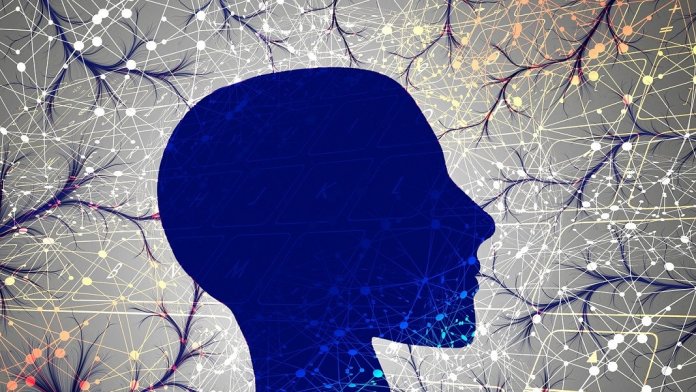Psychedelics are known for inducing altered states of consciousness in humans by fundamentally changing our normal patterns of sensory perception, thought, and emotion. Research into the therapeutic potential of psychedelics has increased significantly in the last decade.
While this research is important, I have always been more intrigued by the idea that psychedelics can be used as a tool to study the neural basis of human consciousness in laboratory animals. We ultimately share the same basic neural hardware with other mammals, and possibly some basic aspects of consciousness too. So by examining what happens in the brain when there’s a psychedelically-induced change in conscious experience, we can perhaps glean insights into what consciousness is in the first place.
We still don’t know a lot about how the networks of cells in the brain enable conscious experience. The dominating view is that consciousness somehow emerges as a collective phenomenon when the dispersed information processing of individual neurons (brain cells) is integrated as the cells interact.
But the mechanism by which this is supposed to happen remains unclear. Now our study on rats, published in Communications Biology, suggests that psychedelics radically change the way that neurons interact and behave collectively.
Our study compared two different classes of psychedelics in rats: the classic LSD type and the less-typical ketamine type (ketamine is an anesthetic in larger doses). Both classes are known to induce psychedelic experiences in humans, despite acting on different receptors in the brain.
Exploring Brain Waves
We used electrodes to simultaneously measure electrical activity from 128 separate areas of the brain of nine awake rats while they were given psychedelics. The electrodes could pick up two kinds of signals: electrical brain waves caused by the cumulative activity in thousands of neurons, and smaller transient electrical pulses, called action potentials, from individual neurons.
The classic psychedelics, such as LSD and psilocybin (the active ingredient in magic mushrooms), activate a receptor in the brain (5-HT2A) which normally binds to serotonin, a neurotransmitter that regulates mood and many other things. Ketamine, on the other hand, works by inhibiting another receptor (NMDA), which normally is activated by glutamate, the primary neurotransmitter in the brain for making neurons fire.
We speculated that, despite these differences, the two classes of psychedelics might have similar effects on the activity of brain cells. Indeed, it turned out that both drug classes induced a very similar and distinctive pattern of brain waves in multiple brain regions.
The brain waves were unusually fast, oscillating about 150 times per second. They were also surprisingly synchronized between different brain regions. Short bursts of oscillations at a similar frequency are known to occur occasionally under normal conditions in some brain regions. But in this case, they occurred for prolonged durations.
First, we assumed that a single brain structure was generating the wave and that it then spread to other locations. But the data was not consistent with that scenario. Instead, we saw that the waves went up and down almost simultaneously in all parts of the brain where we could detect them, a phenomenon called phase synchronization. Such tight phase synchronization over such long distances has, to our knowledge, never been observed before.
We were also able to measure action potentials from individual neurons during the psychedelic state. Action potentials are electrical pulses, no longer than a thousandth of a second, that are generated by the opening and closing of ion channels in the cell membrane. The action potentials are the primary way that neurons influence each other. Consequently, they are considered to be the main carrier of information in the brain.
However, the action potential activity caused by LSD and ketamine differed significantly. As such, they could not be directly linked to the general psychedelic state. For LSD, neurons were inhibited—meaning they fired fewer action potentials—in all parts of the brain. For ketamine, the effect depended on cell type—certain large neurons were inhibited, while a type of smaller, locally connecting neurons fired more.
Therefore, it is probably the synchronized wave phenomenon—how the neurons behave collectively—that is most strongly linked to the psychedelic state. Mechanistically, this makes some sense. It is likely that this type of increased synchrony has large effects on the integration of information across neural systems that normal perception and cognition rely on.
I think that this possible link between neuron-level system dynamics and consciousness is fascinating. It suggests that consciousness relies on a coupled collective state rather than the activity of individual neurons—it is greater than the sum of its parts.
That said, this link is still highly speculative at this point. That’s because the phenomenon has not yet been observed in human brains. Also, one should be cautious when extrapolating human experiences to other animals—it is of course impossible to know exactly what aspects of a trip we share with our rodent relatives.
But when it comes to cracking the deep mystery of consciousness, every bit of information is valuable.![]()
Pär Halje, Associate Research Fellow of Neurophysiology, Lund University
This article is republished from The Conversation under a Creative Commons license. Read the original article.
Image Credit: Gerd Altmann from Pixabay



